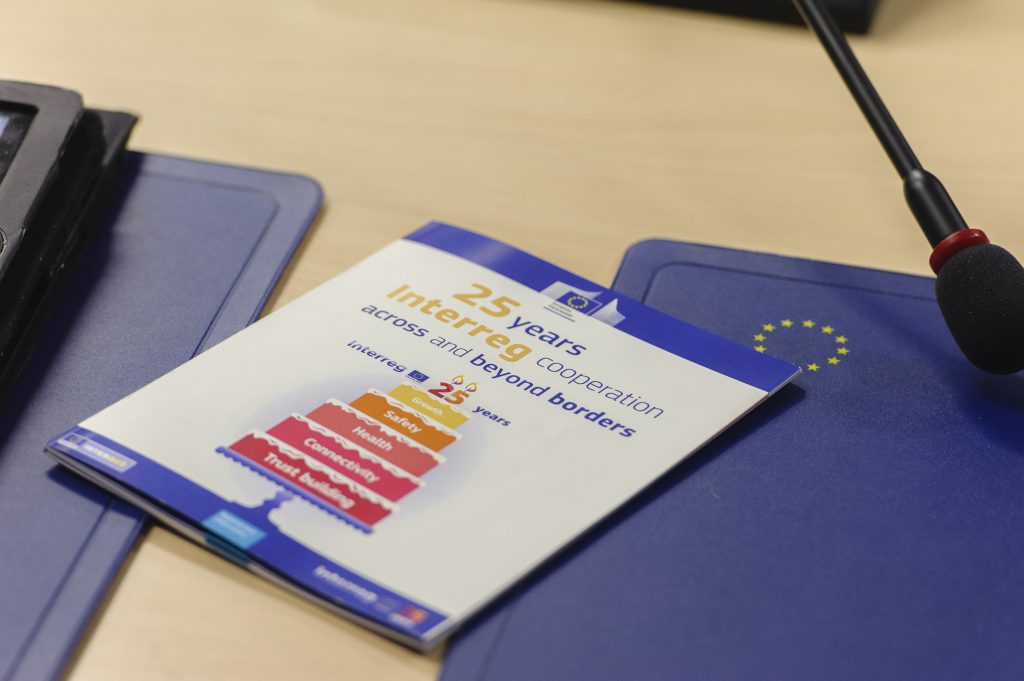In recent years, hard and sharp national borders have softened and become fuzzy and smudged – as if a finger has been run over pencil-drawn lines on a map…
Nowadays, EU citizens take the possibility of passing effortlessly through a border and into another EU country more or less for granted. The ability to pass almost like ‘’a ghost through a wall’’ has become second nature to them. Yet, all this is only possible thanks to the removal of border controls within Schengen.
These borderlands without controls form microcosmic laboratories of EU integration. The European Commission – and the Directorate-Generale (DG) for Regional and Urban Polocy in particular – has encouraged European citizens living in them to use borderland-shaping tools and to experiment with various forms of cooperation in different areas of shared interest (culture, economy, health, environment, etc.). There are numerous concrete results of this. For example, there is the development of a new district straddling the Finno-Swedish border of the twin cities Tornio and Haparanda which attracted many new businesses such as IKEA and created around 1500 new jobs.[1] In the Baltic Sea Region, there has been an increased use of biogas buses in public transport reducing emission levels in urban areas around the Baltic Sea.[2] There have been cases of shared institution-building such as the Polish-German Kindergarten ‘Kindheit ohne Grenzen’ (childhood without borders) which is indented to help children from Słubice and Frankfurt (Oder) to grow up free of nationalist prejudices.[3]In the healthcare sector there is the example of French and Belgian efforts in successfully pooling resources making it easier for patients to go to a hospital on either side of the border.[4]
Since 1990, European Territorial Cooperation (ETC), better known as ‘Interreg‘, has constituted an effective funding tool to help make all these exciting projects possible.[5]
Arguably, no other EU policy is operating so close to the level of the European citizen as the ETC program. When EU citizens argue that they feel too detached from distant EU institutions, the case of the ECT shows that it can also be the other way around: the EU is able to demonstrate its presence on the ground by having a direct, visible and concrete impact on the everyday lives of EU citizens in borderland communities.
Unfortunately, ECT is in these times of crisis increasingly under threat. Take for example ‘Brexit’: not only did the result of the UK referendum on membership of the EU reveal deep dividing lines within the UK, but it also threatened the success of the ETC program PEACE IV and its long-term efforts in reconciling Northern Ireland with the Border Region of the Republic of Ireland.[6]
Another example is the indirect negative effect that the refugee crisis has had on cross-border collaboration between Hungary and Serbia. Although Serbia is not in the EU, it takes part in a kind of ETC program[7] as part of an Instrument for Pre-Accession (IPA) to the EU. The Hungarian government’s highly controversial migration policy of erecting a barbed-wired fence in order to keep refugees out of Europe[8] inevitably also posed a challenge to this Serbian-Hungarian cross-border collaboration program. The case is particularly serious as it indirectly also slows down preparation efforts for EU membership of Serbia in the future.
So what can be done in the face of threats to ETC such as the migration crisis? It is important to defend years of hard and continuous work in the area of ETC. EU citizens need to make sure that homogeneously grown borderland communities are not all of a sudden sharply divided by razor-wired fences. 25 years ago, the idea of ETC was carefully planted like a seed. It has taken its roots in the EU’s policy landscape over time and has grown continuously leading to fruitful cooperation all over Europe and beyond. EU citizens need to be aware of this and protect cross-border partnerships of trust that spread like fragile, but precious little blossoms across Europe.
Continued trust and confidence in the program is vital. Governments should not compromise on the EU program in their national policies. Continued ETC investment conducted in a skillfully targeted way that leads to maximum benefits must continue to be ensured. Last but not least, it is important to spread the word about the program so that more people will make use of it in the future. The EU puts tools for European Territorial Cooperation at EU citizens’ disposal and there are many exciting opportunities out there to experiment in a microcosmic laboratory of EU integration. People need to know about ETC and how to make use of it … what we make of it is up to us!
[1] Haparanda-Tornio, Available at: http://www.haparandatornio.com/ (consulted on 15.11.2016).
[2] Baltic Biogas Bus, Available at: http://www.balticbiogasbus.eu/web/about-the-project.aspx (consulted on 15.11.2016).
[3] Euro-Kita in Frankfurt (Oder) Großer Andrang auf deutsch-polnische Kita, 1 June 2014, Available at : http://www.berliner-zeitung.de/berlin/-euro-kita–in-frankfurt–oder–grosser-andrang-auf-deutsch-polnische-kita-3190828 (consulted on 15.11.2016).
[4] Cross-border health care in Europe, 2014, Available at : http://www.euro.who.int/__data/assets/pdf_file/0009/263538/Cross-border-health-care-in-Europe-Eng.pdf?ua=1%20(consulted%20on%2015.11.2016).
[5] Interreg : European Territorial Cooperation, Available at : http://ec.europa.eu/regional_policy/en/policy/cooperation/european-territorial/ (consulted on 19.11.2016).
[6] Brexit threatens £425 million in EU Peace programme grants to Northern Ireland, 22 February 2016, Available at : http://www.belfasttelegraph.co.uk/news/northern-ireland/brexit-threatens-425-million-in-eu-peace-programme-grants-to-northern-ireland-34474920.html (consulted on 15.11.2016).
[7] Hungary-Serbia, IPA Cross-Border Co-operation Programme, Available at: http://www.hu-srb-ipa.com/ (consulted on 15.11.2016).
[8] Migrants Stream Into Hungary, as Fence Rises on Serbian Border, 13 September 2015, Available at : http://www.wsj.com/articles/migrants-stream-into-hungary-as-fence-rises-on-serbian-border-1442107194 (consulted on 15.11.2016).

